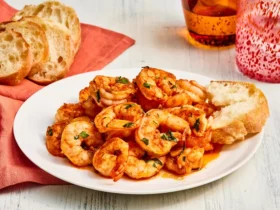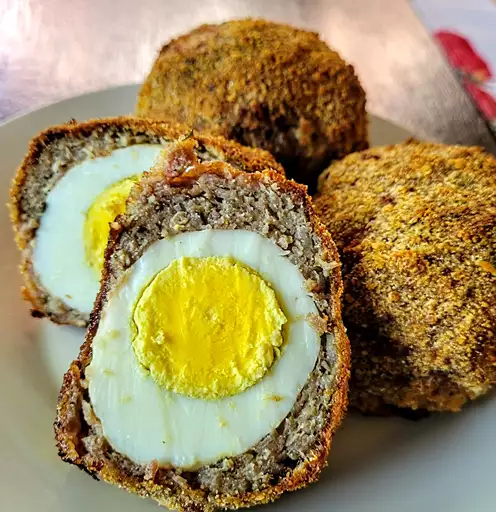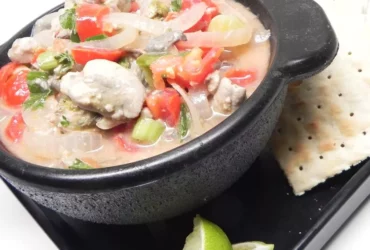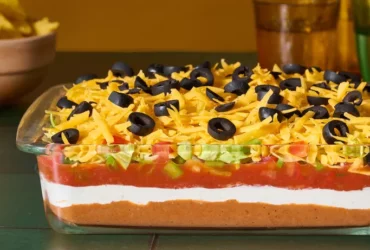Ingredients
Sausages
Sausages are an essential ingredient in many dishes, including baked scotch eggs, which require premium quality sausages to bring out the best flavors. When it comes to selecting sausages for this recipe, there are several options to consider.
The most common type of sausage used in baked scotch eggs is pork sausage, which provides a rich and meaty flavor that complements the egg and breadcrumbs perfectly. Look for a high-quality pork sausage that contains no fillers or by-products, as these can affect the texture and taste of the final product.
Another option is to use Cumberland sausages, also made from pork but with a coarser texture and more pronounced flavor than regular pork sausages. These sausages work particularly well in baked scotch eggs due to their robust taste and slightly sweet undertones.
For those who prefer a lighter or leaner option, chicken sausages can be used as an alternative to traditional pork sausages. Chicken sausages offer a similar texture to pork sausages but with the added benefit of being lower in fat content, making them a better choice for those watching their diet.
In addition to these options, some people prefer using Italian sausage or Chorizo sausage due to their distinctive flavor profiles and spicy undertones. While these options may alter the overall taste of the baked scotch eggs slightly, they can still produce an amazing dish when used correctly.
Regardless of which type of sausage is chosen, it’s essential to ensure that they are fresh and of high quality to get the best results from the recipe. A good rule of thumb is to always check the expiration date on the packaging or purchase sausages from reputable butchers who can provide advice on their products.
Bacon
- The Baked Scotch Eggs Recipe relies heavily on the use of high-quality ingredients, with Bacon being a crucial component.
- Bacon is a type of salt-cured meat typically made from pork belly or back cuts.
- It’s usually smoked or air-dried to create a distinctive flavor and texture that’s both savory and slightly sweet.
- The process of making bacon involves curing the meat with a combination of salt, sugar, and other ingredients such as pink salt, black pepper, and sometimes brown sugar or other spices.
- The curing time can vary depending on factors like the size of the cut and the desired level of dryness.
- After curing, the bacon is typically washed to remove excess cure before being dried to prevent bacterial growth.
- Some types of Bacon may be smoked or cooked further after drying to enhance the flavor and texture.
- The resulting product can range in color from light pink to dark brown, depending on the level of smoking or cooking.
- For a Baked Scotch Eggs Recipe, you’ll want to use thick-cut Bacon that’s been cooked until crispy but still retains some chewiness.
- This will provide a satisfying texture contrast when paired with the creamy filling and crunchy egg whites.
- To enhance the flavor of your bacon, try using different types such as applewood-smoked, hickory-smoked, or even maple-glazed bacon for a sweeter twist.
Hardboiled eggs
The key ingredient for making delicious Baked Scotch Eggs is hard-boiled eggs, which are an essential component of this dish.
To make hard-boiled eggs, you will need:
- 1 dozen large eggs
- A pot with a lid
- A stovetop or electric range for cooking
- Cold water for boiling
- Salt, optional (for flavor)
Here’s how to prepare the hard-boiled eggs:
- Place the eggs in a single layer at the bottom of the pot.
- Fill the pot with cold water, making sure that the eggs are fully submerged. The water level should be about an inch above the eggs.
- Leave enough room in the pot for the eggs to cook without overcrowding them.
- Place the pot on the stovetop or electric range and bring the water to a boil.
- Once the water is boiling, reduce the heat to a simmer (medium-low heat) and let the eggs cook for 10-12 minutes. This will allow the yolks to set and the whites to become firm.
- After 10-12 minutes, remove the pot from the heat source and immediately transfer it to an ice bath or a sink filled with cold water. Let the eggs cool in the cold water for at least 5-7 minutes to stop the cooking process.
- Once the eggs have cooled, crack them gently on a flat surface to remove the shells. Rinse the eggs under cold running water to remove any remaining bits of shell.
Now your hard-boiled eggs are ready to be used in the Baked Scotch Eggs recipe!
Scotch eggs seasonings (e.g., salt, black pepper)
The beauty of a classic Baked Scotch Egg lies not only in its simplicity but also in the rich flavors it offers, all thanks to the carefully chosen ingredients and seasonings that go into making it. At the heart of every great Scotch egg are the two main ingredients: the hard-boiled eggs and the sausage meat.
For the perfect Baked Scotch Egg, you’ll want to use high-quality ingredients. Choose fresh eggs with rich yellow yolks and firm whites. As for the sausage meat, look for a mix that is coarse and chunky, rather than finely ground. This will not only add texture but also help create that distinctive flavor.
But it’s what you add to these two main ingredients that truly sets your Baked Scotch Eggs apart from the rest. The key is in using seasonings that complement rather than overpower them. Salt, for instance, is a must-have in every seasoning blend, bringing out the natural flavors of both the eggs and the sausage meat.
Black pepper, on the other hand, adds a subtle yet distinct flavor that cuts through richness without overpowering it. It’s also one of those seasonings that pairs well with most other ingredients you might add to your Baked Scotch Eggs, making it a versatile addition to any seasoning mix.
Others who like a bit more zest in their life might turn to herbs and spices such as paprika, garlic powder, or onion powder. These not only add depth but also help bring the flavors together into a cohesive whole. The key, however, is balance – too much of anything can overpower the dish.
Finally, for that extra kick you can never have enough of, consider adding a pinch of cayenne pepper to your Baked Scotch Eggs. This not only adds heat but also helps cut through richness and leaves the palate feeling refreshed and clean.
In the end, it’s all about balance – balancing flavors to create a dish that is greater than the sum of its parts. And with these simple yet effective seasonings combined with high-quality ingredients, you’ll have the perfect Baked Scotch Eggs every time.
The key to making a great Baked Scotch Egg is selecting the right ingredients, which include high-quality components that will elevate the dish and ensure it turns out deliciously.
For the eggs, you’ll need large ones that are fresh and have been properly refrigerated to prevent any bacterial contamination.
The next essential ingredient is Meat – specifically a type of sausage meat such as pork or beef. This will be used to wrap around each egg to create the distinctive Scotch egg shape.
Selecting the right sausage meat can be crucial in achieving that perfect balance of flavors and textures. Look for products with a decent fat content, as this will contribute to the juiciness of the finished dish.
You’ll also need some breadcrumbs or other crunchy elements to provide texture contrast when you take your first bite of the baked Scotch egg.
Finally, consider adding some extra seasonings such as salt and pepper to give the dish an added depth of flavor. Don’t forget a bit of milk to help bind everything together in the meat mixture!
Remember that while you can customize your baked Scotch egg recipe to suit your taste preferences, using the right ingredients is essential for achieving success.
By carefully selecting each component and combining them in the right proportions, you’ll be well on your way to creating a truly exceptional Baked Scotch Egg dish that’s sure to please even the pickiest of eaters!
Taking It All Together
Assembly and Baking
To create a mouthwatering Baked Scotch Eggs recipe, it’s essential to Take It All Together, which means combining all the ingredients and components in harmony. This step is crucial for achieving a balanced flavor profile and ensuring that every bite is packed with texture and taste.
First, you’ll need to gather your eggs, preferably farm-fresh or high-quality ones. These will be the star of the show, providing creaminess and richness to each egg half. Next, prepare the meat mixture, which can be a combination of ground meat (beef, pork, or lamb), spices, and herbs like thyme, rosemary, or paprika. This mixture will add depth and savory flavor to your Scotch eggs.
Now, it’s time for assembly. Carefully peel the eggs and cut them in half lengthwise. Gently remove the yolks from each egg half, taking care not to break them. In a bowl, mix together the meat mixture with some breadcrumbs or crushed crackers to add texture and help bind the ingredients.
Next, take a spoon and fill each egg white cavity with a generous amount of meat mixture. Be sure to leave enough room for the yolk on top, but make sure it’s fully covered in the meat mixture. This will create a harmonious balance of flavors and textures.
Once you’ve filled all the eggs, place them on a baking sheet lined with parchment paper or a silicone mat. You can also use mini muffin tins to help maintain their shape and make them easier to bake in batches. Drizzle with a little oil and sprinkle some extra breadcrumbs or grated cheese on top.
Now, it’s time for the baking process. Preheat your oven to 375°F (190°C). Place the baking sheet or muffin tin in the oven and let it bake for about 20-25 minutes or until the eggs are golden brown and the meat is cooked through. You may need to adjust the cooking time based on your specific oven, but this should give you a good starting point.
Once they’re done, remove the Scotch eggs from the oven and let them cool for a few minutes before serving. Slice in half or serve whole, depending on your preference. These Baked Scotch Eggs are perfect as an appetizer, snack, or even as part of a larger meal – enjoy!
Roll the sausage mixture into a log shape.
To take it all together and complete the baked scotch eggs, you’ll want to roll out the sausage mixture into a log shape. This will allow you to easily form the mixture into the perfect cylindrical shape that’s characteristic of traditional scotch eggs.
Here are the step-by-step instructions for rolling the sausage mixture:
- Select the right portion size: Before starting, divide your sausage mixture into equal portions, depending on how large you want your baked scotch eggs to be. A good rule of thumb is to make them about 1-2 inches in diameter.
- Shape and mold: Use your hands or a spatula to shape each portion into a smooth log shape, making sure there are no gaps or weak spots along the way.
- Mold for uniformity: You can also use plastic wrap or parchment paper to help form and hold the sausage mixture together as you roll it into a neat log. This will give your baked scotch eggs a consistent, compact shape.
- Get it just right: Take your time rolling out each portion of sausage mixture until you’re satisfied with its size, shape, and uniformity. Remember that the goal is to achieve an even distribution of ingredients and texture throughout your scotch egg.
Once you’ve rolled all the sausage mixture into log shapes, you’ll be ready to assemble your baked scotch eggs by encasing them in a layer of breadcrumbs or crushed crackers and baking until golden brown. With these precise steps, you’ll achieve perfectly crafted baked scotch eggs that are sure to delight your family and friends!
Wrap each egg in a piece of sausage.
- To take it all together when making Baked Scotch Eggs, wrap each egg in a piece of sausage is an essential step that requires attention to detail and a gentle touch.
- Start by preparing your sausage, whether you’re using homemade or store-bought, make sure it’s cooked and crumbled into small pieces.
- Select large eggs for this recipe, as they will provide the best balance between egg white and yolk.
- Gently place a piece of cooked sausage over one half of each egg, ensuring the edges are aligned with the edges of the egg. This helps to maintain an even shape when baking.
- Next, fold the other half of the egg over the sausage to enclose it completely, pressing the yolk firmly into the sausage to prevent breakage during baking.
- To create a uniform and appealing presentation, you can use a fork to gently hold the wrapped egg in place. Make sure not to press too hard on the eggs, as this may cause them to break or the yolk to burst.
- Place the wrapped Scotch eggs onto a baking sheet lined with parchment paper, leaving about 1 inch of space between each egg to allow for even cooking.
- Brush the tops with a little bit of oil and season with salt and pepper as needed. You can also sprinkle some paprika or other herbs on top for extra flavor and color.
- Bake in a preheated oven at 375°F (190°C) for about 20-25 minutes, or until the sausage is golden brown and crispy on the outside and cooked through.
Place on baking tray, leaving some space between them
Once you’ve prepared all the components for the baked scotch eggs, it’s time to assemble and place them on a baking tray.
To do this, start by placing a bed of paper towels or parchment paper on the baking tray, leaving some space between each egg for even cooking.
This will help prevent the eggs from steaming instead of browning, and also make it easier to remove them from the tray once they’re cooked.
Next, place a portion of the sausage meat mixture onto one half of each egg, leaving a small border around the edges to allow for even cooking.
Multiply this step by the number of eggs you are preparing:
- For 4 eggs: repeat this process 4 times
- For 6 eggs: repeat this process 6 times
- And so on…
After placing the sausage meat mixture on each egg, fold the other half of the egg over to enclose the filling.
Repeat this process until all the eggs have been wrapped in sausage meat and placed on the baking tray.
Make sure to leave about 1 inch (2.5 cm) of space between each egg to allow for even cooking and prevent them from steaming instead of browning.
Now that your baked scotch eggs are all assembled and ready to go, you can place the baking tray in the oven at a temperature of 375°F (190°C).
Cook for about 20-25 minutes or until the sausage meat is cooked through and the egg is heated through.
Remove from the oven and let cool on a wire rack before serving.
Brush tops with beaten eggs
To take it all together for this delicious baked scotch egg recipe, we will combine the cooked sausage meat with a beaten egg.
Here’s how to proceed:
- Preheat your oven to 375°F (190°C). Line a baking sheet with parchment paper or aluminum foil, leaving some overhang for easy removal.
- Cook the sausage meat in a pan over medium heat until it is browned and cooked through. Drain the excess fat and set aside.
- Hard-boil the eggs by placing them in a single layer in a saucepan, covering them with cold water, and bringing to a boil. Once boiling, reduce the heat to a simmer for 10-12 minutes or until the desired doneness is reached.
- Peel the cooled eggs and set them aside on a flat surface.
- Brush the tops of each egg with beaten eggs. You can use one egg per two eggs or as needed, depending on how many you are preparing.
This is an essential step to help bind the sausage meat to the egg when baked and give it a rich, golden-brown crust.
Bake at 375°F for about 2530 minutes
To take it all together, baking the scotch eggs requires a bit more finesse and attention to detail than other methods. First, make sure you have all the necessary ingredients within arm’s reach, including the eggs, sausage meat, breadcrumbs, cheese, and seasonings.
Next, prepare the sausage meat by breaking it up with your fingers or a fork until it is evenly distributed. You can also use a food processor to chop the meat if you prefer a finer consistency.
In a separate bowl, whisk together the egg yolks and a pinch of salt until they are well combined. This will help to incorporate air into the mixture and give it a lighter texture.
Now it’s time to assemble the scotch eggs. To do this, wrap each egg in a layer of sausage meat, making sure to cover the entire surface. Be gentle when handling the eggs to avoid breaking them.
Once you have all of the scotch eggs assembled, place them on a baking sheet lined with parchment paper. Leave about an inch of space between each egg to allow for even cooking.
Now it’s time to bake the scotch eggs. Preheat your oven to 375°F (190°C). This temperature and time will give you perfectly cooked scotch eggs with a crispy exterior and a moist interior.
Bake the scotch eggs for about 25-30 minutes, or until they are golden brown on the outside and firm to the touch. You can also check for doneness by inserting a knife or skewer into one of the eggs; if it comes out clean, it’s cooked through.
Tips and Variations
Get Creative with Toppings or Fillings
To take your baked scotch eggs to the next level, get creative with toppings and fillings. Here are some tips and variations to inspire you:
Toppings
- Spicy kick: Sprinkle a pinch of cayenne pepper or red pepper flakes on top of the eggs for an added kick.
- Lemon zest: Grate some lemon zest over the eggs and sprinkle with chopped fresh parsley for a bright and refreshing flavor.
- Crispy bacon bits: Crush some crispy bacon into small pieces and sprinkle on top of the eggs for a smoky, savory flavor.
Fillings
- Bacon jam: Spread a layer of homemade or store-bought bacon jam over the egg before wrapping it in the sausage mixture.
- Mushroom duxelles: Mix sautéed mushrooms with shallots and herbs, and spread over the egg for added depth of flavor.
- Roasted red pepper hummus: Spread a layer of roasted red pepper hummus over the egg before wrapping it in the sausage mixture.
Sausage variations
- Jalapeño cheddar: Mix diced jalapeños and shredded cheddar cheese into the sausage mixture for a spicy, cheesy kick.
- Italian-style: Add chopped fresh parsley, basil, and oregano to the sausage mixture for an Italian-inspired flavor.
Crust variations
The possibilities are endless when it comes to crust variations. Here are some ideas:
- Herby breadcrumbs: Mix chopped fresh herbs like parsley, rosemary, or thyme with breadcrumbs for a fragrant and savory crust.
- Panko crust: Use panko breadcrumbs instead of regular breadcrumbs for a lighter and crisper crust.
- Crispy tempura bits: Crush crispy tempura bits into small pieces and sprinkle over the eggs for added crunch and flavor.
Additional tips
To take your baked scotch eggs to the next level, consider the following:
- Add some acidity: A squeeze of fresh lemon juice or a splash of vinegar can help brighten the flavors and balance out the richness of the dish.
- Experiment with spices: Add a pinch of this or that spice to give your scotch eggs a unique flavor profile.
Baked Scotch Egg Variations by Region
Here are some ideas for regional baked scotch egg variations:
- British-style: Serve with mashed potatoes and ketchup or brown sauce, just like in a traditional British pub.
- American-style: Serve with sweet potato fries or hash browns and a side of spicy mustard or aioli.
- Korean-style: Serve with kimchi slaw and steamed bok choy for an added kick of heat and flavor.
Chopped herbs like parsley, chives
Certain fresh chopped herbs, such as parsley and chives, add a burst of flavor to many dishes, including our baked scotch eggs.
Chopped herbs can be used in place of or in addition to some of the ingredients in this recipe, to give it an extra boost of flavor.
Some popular alternatives to parsley include basil, dill, and tarragon, which have distinctly different flavors that can add a new dimension to our scotch eggs.
When using chopped herbs, keep in mind that they are stronger than the dried or frozen variety, so use them sparingly. Start with a small amount and taste as you go, adding more until you achieve the desired flavor.
Parsley is a popular choice for its mild, fresh flavor and bright green color. It pairs well with most ingredients, including meats, vegetables, and grains.
Chives have a milder onion flavor than regular onions and are a popular addition to many dishes. They can be used in place of or in addition to scallions or chervil in recipes.
To prepare chopped herbs for use in our baked scotch eggs recipe, simply chop the desired amount with a knife or food processor until they reach the desired texture.
You can also mix different types of chopped herbs together for a unique flavor profile. For example, combining parsley and chives creates a fresh, savory flavor that’s perfect for many dishes, including our baked scotch eggs.
Cheese
The versatility of cheese is a treasure trove for culinary enthusiasts, and when combined with the classic Baked Scotch Egg recipe, it opens up a world of flavor possibilities.
Tips and Variations
- For a creamier texture, add shredded cheddar or Monterey Jack to the mixture before wrapping the egg. This will create a rich and indulgent filling.
- To introduce an Italian twist, sprinkle some grated Parmesan on top of the eggs before baking for a nutty flavor.
- For a spicy kick, mix in some diced jalapeños or red pepper flakes into the cheese mixture. This adds a bold and unexpected element to the dish.
- To make it a Mediterranean-inspired snack, add crumbled feta and chopped fresh parsley on top of the eggs before baking for a tangy taste.
Cheese Options
The type of cheese used can greatly impact the flavor profile of the baked scotch eggs. Here are some popular options:
- Cheddar: A classic choice that adds a sharp and tangy taste.
- Gouda: For a milder flavor, use smoked or plain Gouda to complement the richness of the egg.
- Mozzarella: This melts beautifully and adds an creamy texture when combined with other cheeses.
- Blue cheese: For a bold and pungent taste, crumble some blue cheese into the mixture for added depth.
Tips for Cheese Lovers
If you’re an avid cheese fan, consider these expert tips:
- Use high-quality cheese: Freshly grated or crumbled cheese will yield a better result than pre-shredded or processed options.
- Mix and match: Combine different types of cheese to create unique flavor profiles. Experiment with various ratios to find the perfect balance for your taste buds.
- Experiment with different melting techniques: To achieve a smooth, melted texture, try using different cheeses or adding small amounts of grated carrot or zucchini to help bind the mixture together.
Remember, the key to perfect baked scotch eggs is finding the right balance between flavors. Don’t be afraid to experiment with different cheese combinations and variations to create a dish that’s uniquely yours!
Diced bell peppers
Diced bell peppers are a versatile ingredient that can add flavor and color to various dishes, including our Baked Scotch Eggs recipe. Here are some tips and variations for using diced bell peppers:
Tips
- Use a mix of colorful bell pepper varieties, such as red, yellow, green, and orange, to add visual appeal to your dish.
- Dice the bell peppers into small, uniform pieces for even cooking and flavor distribution.
- To prevent the bell peppers from becoming too soft or mushy, cook them briefly in a pan with oil before adding them to the recipe.
Variations
- Spicy Bell Peppers: Add diced jalapeños or serrano peppers to the bell pepper mixture for an extra kick of heat.
- Mediterranean-Style: Mix diced feta cheese, Kalamata olives, and artichoke hearts with the bell peppers for a Mediterranean-inspired flavor profile.
- Asian-Inspired: Combine diced bell peppers with soy sauce, ginger, and sesame oil for a savory and umami-rich flavor.
Incorporating diced bell peppers into your Baked Scotch Eggs recipe can add texture, flavor, and visual appeal to this classic dish. Experiment with different types of bell peppers and flavor combinations to find the perfect variation for your taste buds!
- Best Lusha Alternatives for 2025 - April 22, 2025
- Best Overloop Alternatives for 2025 - April 22, 2025
- Best 6sense Alternatives for 2025 - April 22, 2025















